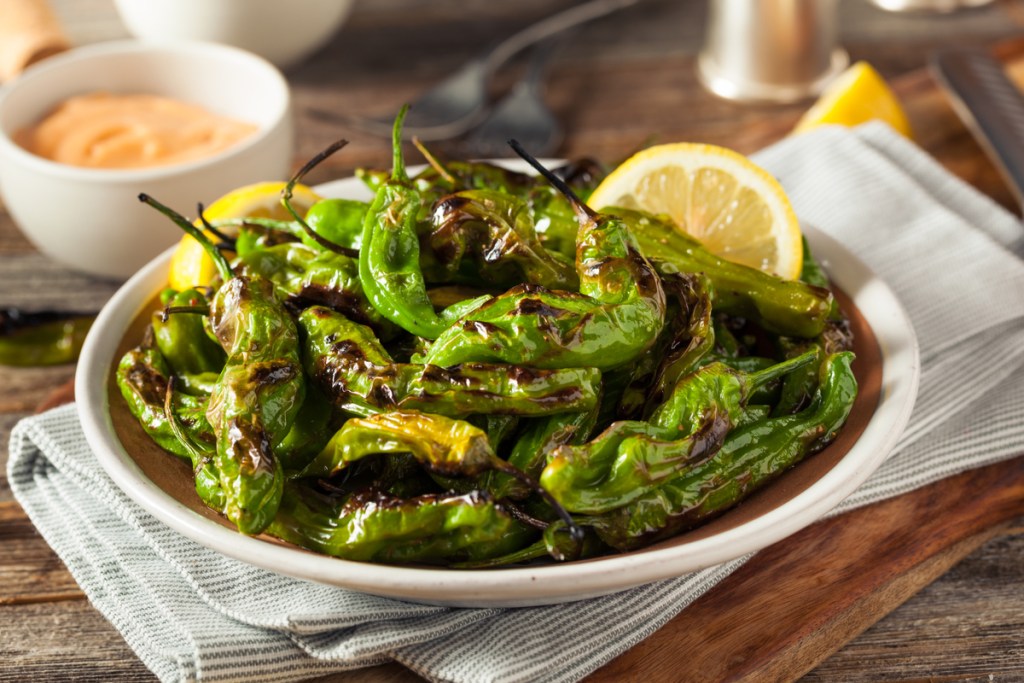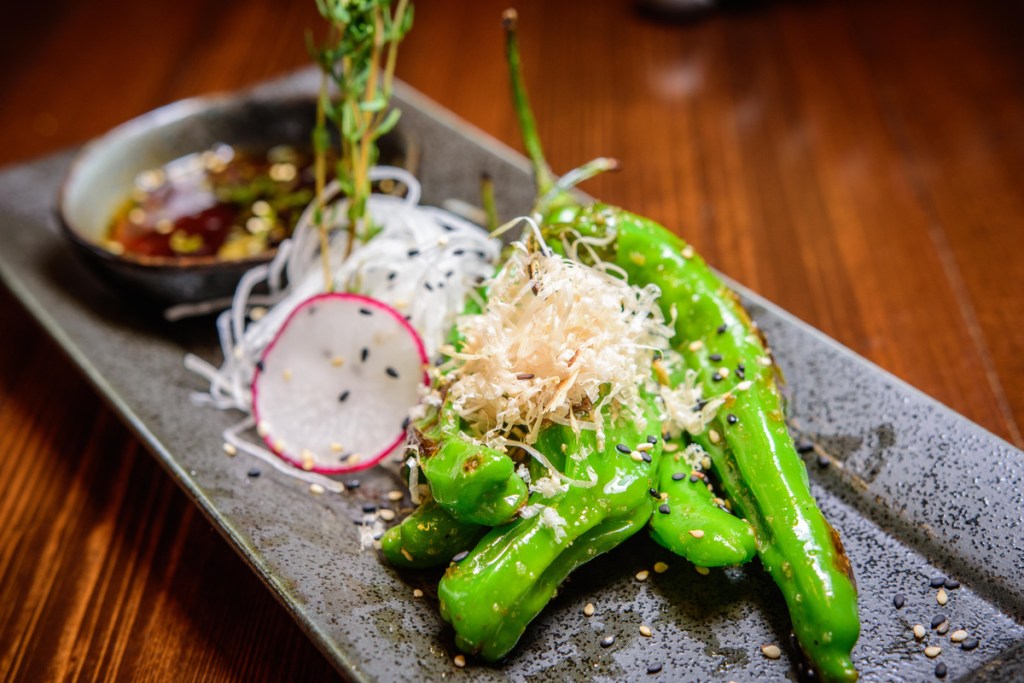
Move over, edamame. Shishito peppers are the latest vegetable to catch on as a trendy appetizer in restaurants across the country. Typically, restaurants (and home cooks) serve shishitos “blistered,” or roasted in a pan or over flames, to bring out their signature mildly sweet flavor. Adding to the fun, about one in ten shishito peppers is much spicier than the other nine, bringing an element of roulette to the dinner table.
So we know they’re delicious, but are they nutritious? Here’s all you need to know about shishito peppers and their overall nutritional profile.

Where do shishito peppers come from?
Shishito peppers are native to Asia but are fairly easy to grow in all kinds of places — including the home garden. They have a slender, conical shape, making them look like a slightly longer jalapeno, and are rich green in color. They turn red when fully mature but the harvest usually begins while they’re still green.
These appetizers are easy to cook at home, too, even for the amateur chef. All you need is a saute pan, some oil, seasonings, and a few minutes later you’re munching on hot, blistered peppers. Simply cook until their thin skin is partially charred, about five to six minutes, and you’re good to go.
Shishito peppers are making their way onto the nation’s lunch and dinner menus because they’re inexpensive and easy to make. With just a few minutes in the pan and a bit of salt and pepper to taste, you can serve an appetizer that’s a little more interesting than chips and dip. What’s more, the fact that one in 10 peppers is spicy adds an extra element of chance that’s hard to match in other foods. In other words, eating shishito peppers with a group can become a minigame. Who’s going to bite into a hot pepper first?

Are they good for you?
In a word, yes.
Shishito peppers are still pretty new to popular American cuisine, so it’s expected that there are a lot of questions surrounding this dish, particularly its nutritional content. Beyond being a low-fat, low-carb alternative to far less-healthy appetizers like Buffalo wings and cheese fries, there is a wide variety of other nutritional benefits that make this pepper stand out even more.
Like most vegetables, shishito peppers are extremely low in calories. A 3.5-ounce serving (about a quarter of a pound) has a mere 20 calories. On their own, shishitos contain no fat, though the oil used in their preparation can add some to the dish as a whole.
Beyond these basics, a serving of shishito peppers also:
- Provides 170% of your recommended daily Vitamin C
- Delivers 80% of your daily Vitamin A
- Contains Vitamin K, which enhances a variety of bodily functions from bone health to blood clotting
- Delivers Vitamin B6, which optimizes brain health
- Has seeds that contain capsaicin, the ingredient that gives spicy foods their heat. This chemical can speed up metabolism.
- Promotes anti-inflammatory responses in the body
- Lowers LDL, the dangerous type of cholesterol that contributes to clotting and heart disease
- Keeps blood sugar levels in check, a particularly important issue for people with diabetes or who have been instructed by doctors to control blood sugar
Dieters following low-carb diets like paleo or Atkins should be aware that shishito peppers do contain about five grams of carbohydrates per serving. However, fiber accounts for two of those grams, meaning shishito peppers have a “net carb” count of three per serving. They’re so delicious that it’s easy to eat them until you’re full, so keep an eye on the serving size if you’re watching your carb intake.
Shishito peppers are delicious, easy to make, and fun to eat. Add in their nutritional value and you have a fan-favorite appetizer. Diners can look for this option on their local menu as a substitute for those greasy, deep-fried appetizers and other, unfortunately delicious, guilty pleasures.
BlissMark provides information regarding health, wellness, and beauty. The information within this article is not intended to be medical advice. Before starting any diet or exercise routine, consult your physician. If you don’t have a primary care physician, the United States Health & Human Services department has a free online tool that can help you locate a clinic in your area. We are not medical professionals, have not verified or vetted any programs, and in no way intend our content to be anything more than informative and inspiring.



